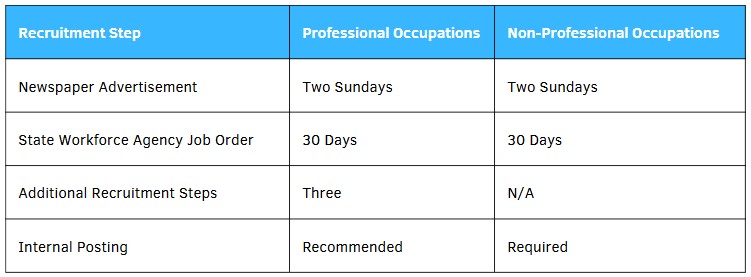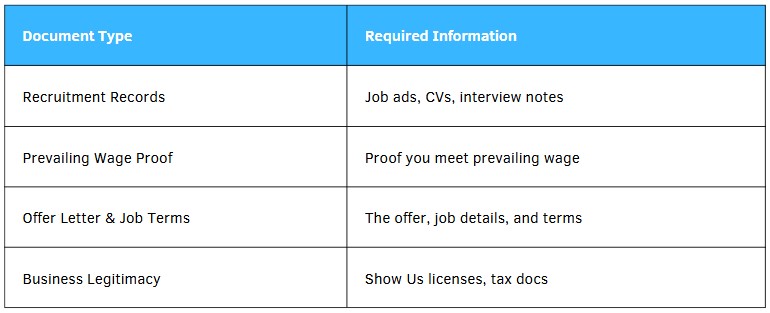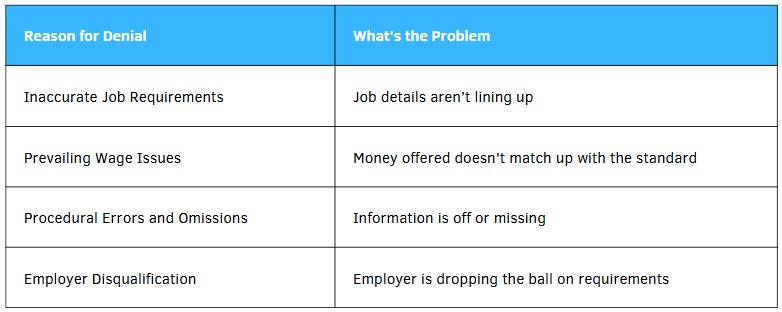
So, what is this PERM Labor Certification all about? Well, it’s all about letting an employer in the U.S. bring on board a foreign worker for good. The Department of Labor (DOL) is the big boss here, ensuring everything’s above board by issuing this certification. Before running to the Department of Homeland Security’s U.S. Citizenship and Immigration Services (USCIS) begging for an immigration petition, they’ve got to get a green light from DOL’s Employment and Training Administration (ETA). This is like showing your hand and proving that no local talent is missing out because you’re hiring from abroad. It’s all about leveling the playing field and ensuring fair wages and work conditions.
Importance of Prevailing Wage Determination
Now, before these employers go all trigger-happy with hiring, there’s the nitty-gritty of prevailing wage determination they’ve got to nail down. Picture this as a price tag from the Office of Foreign Labor Certification’s (OFLC) National Prevailing Wage Center (NPWC) that says, “Hey there employer, this is how much this job should pay.” And they better follow it to the letter. If they lowball it, well, their PERM application might spend eternity in the denied pile. By doing their homework and snagging an updated wage determination from the NPWC, they can dodge the drama and keep the ball rolling.
Steps in PERM Application
When tackling the PERM process, it’s all about getting your ducks in a row. Some must-do steps play a huge role in meeting legal requirements and boosting your shot at getting the green light. Let’s break it down into simpler, more digestible bites.
Job Requirements and Duties
First things first—employers have to nail down the minimum requirements and responsibilities for a job when dealing with the PERM application. The Department of Labor expects these to match the company’s needs and suit the job like a glove. It’s a big deal to get this right since they’ll be giving it the once-over when you apply.
Here’s what you gotta think about:
- Minimum Education Level: Spell out the degree and area of study needed.
- Experience: Pin down exactly how much relevant experience the candidate should bring to the table.
- Skills: List the must-have skills or any certifications for the job.
Pre-Filing Recruitment Process
Before you hit ‘send’ on that PERM application, employers jump through a few hoops to make sure no qualified U.S. workers are itching to fill the position. The Department of Labor has laid out the drill, and it changes up a bit based on the kind of job it is.
Recruitment Steps for Professional Occupations
For those brainy gigs:
- Advertise in a Newspaper: Throw a couple of ads in the local Sunday paper—not once, but on two separate Sundays.
- State Workforce Agency Job Order: Lock in a job order with the state’s workforce agency for at least 30 days.
- Additional Recruitment Steps: Pick three more ways to get the word out, like job fairs or landing a spot on college campuses.
Recruitment Steps for Non-Professional Occupations
For roles without all the bells and whistles, the dance steps are a tad simpler:
- Advertise in a Newspaper: Do the Sunday ad double, just like the professionals.
- State Workforce Agency Job Order: Same duration, same deal.
- Internal Posting: Spread the word inside the company doors.
Recruitment Documentation
Hang onto every scrap of proof from recruiting efforts. You gotta show why any U.S. candidates didn’t cut. All this paper trail is key, and you’ll need to hang onto it for five years in case the Department of Labor comes knocking.

Tracking down Shihab Immigration Firm advice? Document all your attempts to hire and show you tried every which way to recruit locally.
Nailing these steps is a big deal for anybody diving into the permanent labor certification pool. A bit of elbow grease and sticking to the rule book can make your PERM application a winner.
PERM Application Submission
Getting the PERM application right is a make-or-break moment in the quest for permanent labor certification. Fingers crossed, this guide’s gonna help you navigate through the online submission maze without pulling out your hair.
Online Submission Process
So, the first stepping stone here is all about setting up your online presence with the big wigs. Employers gotta register for a Login.gov account and create a Foreign Labor Application Gateway (FLAG) account for tides-smooth sailing in the PERM online submission world. Online submissions work like magic, cutting out paperwork baggage, making info easy to grab, and helping the Office of Foreign Labor Certification (OFLC) breeze through your file faster than you can say PERM!
Here’s your quick and dirty game plan:
1. Hop on to Login.gov and get yourself an account.
2. Get your FLAG account up and running.
3. Wrap up and hit send on the ETA Form 9089 using FLAG.
Sure, you can still snail mail your forms, but word on the street says that the online route is the real MVP for being less of a headache.
Documentation Requirements and Tips
Having your documentation together is non-negotiable in this game, so you don’t end up with unexpected audits or crazy delays.
What you gotta have nailed down:
– Recruitment Evidence: Keep a tight ship with records of your hiring hustle, like job postings, all those resumes piling up, interview scribbles, and reports about how you rounded up your candidates.
– Prevailing Wage Determination: You’ve gotta prove the wage you’re offering holds up to the one deemed kosher by Uncle Sam.
– Job Offer and Employment Terms: Show them you got your offer letter, job duties description, and employment essentials all sorted.
– Proof of Business: File stuff like your biz licenses and tax returns to prove you’re not running things outta your garage!
Tips to Minimize Delays
1. Thorough Preparation: Dot those i’s and cross those t’s on your forms. Getting messy can throw you down audit lane.
2. Timely Filing: Don’t snooze on filing that PERM and I-140 Immigrant Worker Petition. Wrap it up within six months of getting a nod from the DOL on your PERM.
3. Respond to Audits Promptly: Fast and accurate responses to any audit will keep things chugging along nicely, instead of turning into a snail race.
Documentation Checklist

Playing it by the book with the online process and ensuring your docs tick all the boxes ups your odds for a PERM victory.
Dealing with PERM Denials
Trying to get through the PERM process can feel like you’re in a maze, and sometimes hitting a dead end with a denial is just part of the journey. Getting a grip on the whys of these denials and knowing your options for a redo or a challenge can really make a difference in turning things around.
Reasons for Denials
Here’s the lowdown on why a PERM application might get the thumbs-down:
– Inaccurate Job Requirements: Messing up the job requirements can trip you up. If what you’ve listed doesn’t match the actual job, expect a roadblock.
– Prevailing Wage Issues: You gotta hit that sweet spot with the wage. If what you’re offering is off the mark, it’s game over.
– Procedural Errors and Omissions: Leave out the basics, or make a procedural hiccup, and it’s like shooting yourself in the foot.
– Employer Disqualification: If the employer doesn’t size up or meet the criteria, that’s a dealbreaker.
Reconsideration and Appeal Process
Getting that denial notice isn’t fun, but it’s not the end of the world. Step one is to really read through it to catch what exactly went wrong.
- Request for Reconsideration: You have 30 days to make your case to the Department of Labor (DOL). Gather your facts, address what went off-track, and throw in any missing documents.
- Appeal to BALCA: If Phase 1 doesn’t pan out, or you’re sure there’s been a mix-up, take it to the big league – the Board of Alien Labor Certification Appeals (BALCA). Lay it all out there, and let them take a swing at it.

Knowing what might cause a PERM application denial and understanding the steps you can take for reconsideration or making an appeal gives applicants the tools to take action and up their chances for success.



